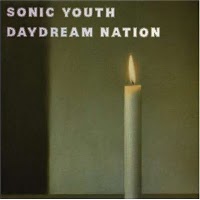 “Record collectors shouldn’t be in bands!” This is what Joe Carducci said when the other guys at SST records wanted to sign Sonic Youth in the mid eighties, And I can’t fully disagree with the statement. Sonic has spent their career as artsy NYC hipsters riding any and every genre of music that they may or may not have business making, as long as it’s “cool”. In the early days, it was mostly a band trying to balance with one foot in punk while holding on to their no wave and high art credibility. By the early nineties, they were consciously dumbing down to cash in on grunge riffs. But at some point between the two, they managed to create one of the best rock albums of all time, the massive double LP, Daydream Nation. It’s focused drive and sprawling experimentation come off so impressively natural. Somehow they balance a sort of psychedelic rock approach to slightly punk fueled pop songs with very DEAD C like noise drone outs that miraculously blend into a seamless late eighties indie record. Even the usually free flowing poetic vocals are at their least offensive. In fact most of the lyrics are amazing. It’s the band at their peak of maturity. The space inside each song seems to grow with each listen as well, which leads to what seems like endless repeated listenings. Sadly, the 4th side trails off into some annoying territory, but there’s so much to chew on already, and for the first three sides, nothing to skip. The sound suggests high art without the pretension overshadowing the human feel of the songs. Even Carducci later admitted that they were a good band in this period. That’s what I think impresses me the most about Sonic Youth; every instinct tells me that this band need’s to get real yet I always come back to them, and in Daydream’s case, rarely leave. –Alex
“Record collectors shouldn’t be in bands!” This is what Joe Carducci said when the other guys at SST records wanted to sign Sonic Youth in the mid eighties, And I can’t fully disagree with the statement. Sonic has spent their career as artsy NYC hipsters riding any and every genre of music that they may or may not have business making, as long as it’s “cool”. In the early days, it was mostly a band trying to balance with one foot in punk while holding on to their no wave and high art credibility. By the early nineties, they were consciously dumbing down to cash in on grunge riffs. But at some point between the two, they managed to create one of the best rock albums of all time, the massive double LP, Daydream Nation. It’s focused drive and sprawling experimentation come off so impressively natural. Somehow they balance a sort of psychedelic rock approach to slightly punk fueled pop songs with very DEAD C like noise drone outs that miraculously blend into a seamless late eighties indie record. Even the usually free flowing poetic vocals are at their least offensive. In fact most of the lyrics are amazing. It’s the band at their peak of maturity. The space inside each song seems to grow with each listen as well, which leads to what seems like endless repeated listenings. Sadly, the 4th side trails off into some annoying territory, but there’s so much to chew on already, and for the first three sides, nothing to skip. The sound suggests high art without the pretension overshadowing the human feel of the songs. Even Carducci later admitted that they were a good band in this period. That’s what I think impresses me the most about Sonic Youth; every instinct tells me that this band need’s to get real yet I always come back to them, and in Daydream’s case, rarely leave. –Alex
Punk and New Wave
The Damned “Damned Damned Damned” (1977)
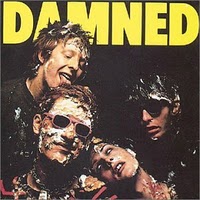 It might not be peanut butter, but no doubt that’s some Stooge flavored pie the Damned are licking up on the cover of Damned, Damned, Damned, an album that wallows in the same scuzzy punk sewer as the influential Detroit rockers, with tracks like “Born To Kill,” speed freakers “Neat Neat Neat,” “New Rose,” and the menacing Cooper-ish sneer of “Fan Club.” Given a brittle and brutal production job by Nick Lowe, the album rattles with a violent energy that rushes in and assaults your eardrums, running off with your wallet and girlfriend before you’ve had a chance to retaliate, as an appropriate cover of “I Feel Alright” slams the door shut. A simple, pure shot of snotty energy that’s refreshingly free of the political posturing of some other first-wave UK punk. –Ben
It might not be peanut butter, but no doubt that’s some Stooge flavored pie the Damned are licking up on the cover of Damned, Damned, Damned, an album that wallows in the same scuzzy punk sewer as the influential Detroit rockers, with tracks like “Born To Kill,” speed freakers “Neat Neat Neat,” “New Rose,” and the menacing Cooper-ish sneer of “Fan Club.” Given a brittle and brutal production job by Nick Lowe, the album rattles with a violent energy that rushes in and assaults your eardrums, running off with your wallet and girlfriend before you’ve had a chance to retaliate, as an appropriate cover of “I Feel Alright” slams the door shut. A simple, pure shot of snotty energy that’s refreshingly free of the political posturing of some other first-wave UK punk. –Ben
Talking Heads “Remain in Light” (1980)
 In the height of punk and the beginning of hip-hop, white and black music had never been more distant. David Bryne had his eye on fixing that. The funky rhythm section returns more complete then ever with Bryne being more characteristic then ever playing with words and sounds that is both unbelievably cool and bizarre. Brian Eno’s songwriting contribution and production just top it off, from the computer freak out in the opening track to the excellent “Once in a Lifetime”. Above all, it’s Byrne’s tackling questions about our identity in a booming society (“Seen and Not Seen”) and sympathizing with people that aren’t a part of it (“Listening Wind”), that makes it all the more poignant. It’s like those parties where everyone gets drunk and dances their asses off, and around 3am the guys with beards who like to talk about their emotions go on about the government and the super ego. –Allistair
In the height of punk and the beginning of hip-hop, white and black music had never been more distant. David Bryne had his eye on fixing that. The funky rhythm section returns more complete then ever with Bryne being more characteristic then ever playing with words and sounds that is both unbelievably cool and bizarre. Brian Eno’s songwriting contribution and production just top it off, from the computer freak out in the opening track to the excellent “Once in a Lifetime”. Above all, it’s Byrne’s tackling questions about our identity in a booming society (“Seen and Not Seen”) and sympathizing with people that aren’t a part of it (“Listening Wind”), that makes it all the more poignant. It’s like those parties where everyone gets drunk and dances their asses off, and around 3am the guys with beards who like to talk about their emotions go on about the government and the super ego. –Allistair
What a gathering of great musical minds. Adrian Belew, Brian Eno AND David Byrne!? What results is like the offspring of 80’s King Crimson and David Bowie’s Low on uppers. “House in Motion” is ridiculously fun to listen to. The Reggae rhythm mixed with East Indian themes, Adrian Belew doing his thing on guitar, the repeating electronic trumpet and that “mbarp” sound. What the heck is that sound? –Rob
Hüsker Dü ”Candy Apple Grey” (1986)
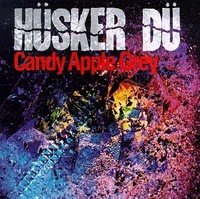 A far cry from the ealier fuzzed-out-high-electric sound they created on past works, but the extremely catchy melodies are what makes Candy Apple Grey truly soar. I didn’t know how to take it at first. My first exposure was New Day Rising and that, of course, is what made me fall in love with them, so I was a little taken’ aback with the melancholy subject matter. Nevertheless, this has become my favorite Husker album by a long shot. There’s no filler, just 10 top-notch songs that I never get tired of hearing. The set perfectly displays how far these guys have progressed from album to album and the fact that it was their major label debut paints the notion of a band that reached their full potential and achieved every ambition they set out to accomplish. Candy Apple Grey is hands down one of the most perfect albums I have ever heard. –Jason
A far cry from the ealier fuzzed-out-high-electric sound they created on past works, but the extremely catchy melodies are what makes Candy Apple Grey truly soar. I didn’t know how to take it at first. My first exposure was New Day Rising and that, of course, is what made me fall in love with them, so I was a little taken’ aback with the melancholy subject matter. Nevertheless, this has become my favorite Husker album by a long shot. There’s no filler, just 10 top-notch songs that I never get tired of hearing. The set perfectly displays how far these guys have progressed from album to album and the fact that it was their major label debut paints the notion of a band that reached their full potential and achieved every ambition they set out to accomplish. Candy Apple Grey is hands down one of the most perfect albums I have ever heard. –Jason
Durutti Column “LC” (1981)
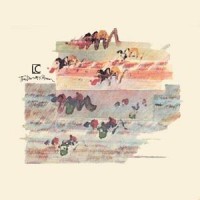
DC’s second, and best, in my humble opinion, LP was generously handed to us by Factory in 1981. Musically spare, and almost obscenely mature, this record is one of those VERY FEW that I honestly think can ‘suit any of my moods.’ Allow me to (reluctantly..) explain my use of the classic ‘suit any mood’ cliche…The playing is both relaxed and tense, the atmosphere playful yet extremely serious, the artwork is controlled yet with splashes of orange and greenish blacks jumping outside of the frame. Each song stands completely on its own, mostly hovering around the 3-5 minute mark, but when being taken in as a whole, seem to blend into one large piece. Timelessness is something most artists strive for, and Mr. Reilly and Co. approach the achievement and struggle to attain it in such a graceful and beautiful way I can listen to them grapple with it all day without tiring. The title is an abbreviation for “La Lotta Continua”, which is an Italian anarchist slogan for ‘the struggle continues’ and the fact that I hear the action and drama of that struggle everytime I listen to the record, makes me revisit on a near daily basis. Pure, thought provoking, European art. -Richard
Chameleons “Strange Times” (1986)
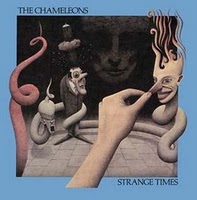 How can you not think The Chameleons are the most underrated band of all time, once you get this far into their catalogue? The guitars single handedly inspired U2 and Interpol, the lyrics were approaching topics unconventional and honest, and the albums were just so complete and original. From the sorrow of losing a close friend to the excitement/desperation of losing your virginity, Strange Times carried a weird variety of topics and themes that carried feelings of joy and sadness. With no mention in Rolling Stones top 500 albums list, no mention in Pitchfork’s 80s list, a recent reunion that went unnoticed, there is no second chance for the mainstream to get a glimpse into the genius of The Chameleons. It will forever be remained as that band with the awesome sleeves that your uncle has in his collection. Probably some derivative post-punk shit, nothing important. –Allistair
How can you not think The Chameleons are the most underrated band of all time, once you get this far into their catalogue? The guitars single handedly inspired U2 and Interpol, the lyrics were approaching topics unconventional and honest, and the albums were just so complete and original. From the sorrow of losing a close friend to the excitement/desperation of losing your virginity, Strange Times carried a weird variety of topics and themes that carried feelings of joy and sadness. With no mention in Rolling Stones top 500 albums list, no mention in Pitchfork’s 80s list, a recent reunion that went unnoticed, there is no second chance for the mainstream to get a glimpse into the genius of The Chameleons. It will forever be remained as that band with the awesome sleeves that your uncle has in his collection. Probably some derivative post-punk shit, nothing important. –Allistair
Ramones “Ramones” (1976)
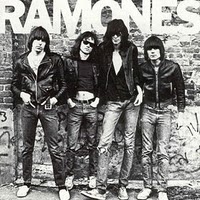 My Ramones story goes — I couldn’t have been more than sixteen years old when I took a trip to the Big Apple with my family during the Thanksgiving holidays. I had been to the city several times before, but this trip was different: my interest in music had grown, I was aware of such a place as CBGB’s, and I had a somewhat understanding of the late 70’s punk movement. My knowledge on the topic was green, but anyhoo – I knew the basics. I would be lying if I said I listened to the music of the Ramones before, but if you were to ask, most likely I would have shrugged my shoulders in agreement that, “yes, I’ve listened to the Ramones.” I even had my very on Ramones t-shirt, despite never hearing any slab of music outside the “Hey Ho” chant of “Blitzkrieg Bop.” As music lovers, we all have been there – loving a band just for the sake of loving them. It could be an older sibling introducing what’s hip or simply idealizing a group to the point of feeling obligations to seek out their influences. For me, it was simpler than that. I saw a Ramones seal t-shirt in a window store and had to have it. Not the coolest introduction, but hey – I’m being honest. That was two years prior. Which brings us back to the New York City-Thanksgiving-Family-Vacation. As I mentioned before my knowledge in music had expanded. Therefore, one of the first things on ‘my’ to-do-list was seek out the nearest record store. My dad got the information from the concierge desk. The rest of the family went shopping with a plan to meet back up around lunch. The record store we found was not some stylish ‘mom & pop’ underground glory, but a mega-store that could have very well been Best Buy or Virgin, can’t exactly remember, it was a long time ago. I just remember it being big. The ‘cool’ meter from this story is already a scorcher, I know. But, like I said — I’m being honest. My pops gave me ample time to look around and peruse the album titles. Soon after it became apparent, why not pick up a Ramones album? Already have the shirt, why not get the music. I of course selected their debut, and it wasn’t because I knew it was the first or cos the only song I recognized was, “Blitzkrieg Bop.” Truth be told, it was the artwork that made my decision. Johnny Ramone, so discreetly, giving the middle finger and Tommy, doing his best to add inches to his undersized height, standing on all tippy toes. While Joey, looking frail and freakish, towering over all his bandmates and Dee Dee…well, just being Dee Dee. The artwork was piercing, with its hoary set color, giving the appearance of an already classic album, I knew I had found my purchase. Many label this band as ‘dumb.’ But that doesn’t really fit. No dumbass I know could ever be described as an inventor of a revolution. Granted, these guys weren’t rocket scientists, they still possessed a talent which sparked an excitement that had been absent from rock. Back to the basics – that was their mission. And it’s obvious they had some wit. If not, they wouldn’t have been able to knock out four classic albums back-to-back, from their debut on to Road to Ruin. And even after, they still showed signs of luster with the Phil Spector produced, End of the Century, plus 1984’s, Too Tough To Die. There was consistency, no question. What gets me about their debut, above all the rest, is it never lets up. 14 songs in under 30 minutes. Now, that’s blitzing. No bullshit. No in between. Just plain old fashioned rock ‘n’ roll without all the self-indulgence that suffocated it from previous years. If I’m not a guitar player, then how the hell am I going to appreciate some fifteen minute virtuoso guitar solo? How am I suppose to relate? And more importantly, value what I’m hearing? The Ramones got that. And that’s what they unleashed on the world in 1976. I love the fact I was in New York the day I first listened to the Ramones. I love how I was experiencing their music in the very city that shaped their sound. I love how I could be passing 53rd and 3rd in a cab while hearing Dee Dee singing about turning tricks. I love hearing songs about chainsaws, beating on brats, and punks named, Judy. The Ramones first album was my New York City experience at the time. It made me see the city in a whole new light. Later I would move to NYC after my 22nd birthday and have other albums play there part in my living and musical advancements. But the Ramones were the first, and it’s fitting, seeing as they were the first to do everything back then. –Jason
My Ramones story goes — I couldn’t have been more than sixteen years old when I took a trip to the Big Apple with my family during the Thanksgiving holidays. I had been to the city several times before, but this trip was different: my interest in music had grown, I was aware of such a place as CBGB’s, and I had a somewhat understanding of the late 70’s punk movement. My knowledge on the topic was green, but anyhoo – I knew the basics. I would be lying if I said I listened to the music of the Ramones before, but if you were to ask, most likely I would have shrugged my shoulders in agreement that, “yes, I’ve listened to the Ramones.” I even had my very on Ramones t-shirt, despite never hearing any slab of music outside the “Hey Ho” chant of “Blitzkrieg Bop.” As music lovers, we all have been there – loving a band just for the sake of loving them. It could be an older sibling introducing what’s hip or simply idealizing a group to the point of feeling obligations to seek out their influences. For me, it was simpler than that. I saw a Ramones seal t-shirt in a window store and had to have it. Not the coolest introduction, but hey – I’m being honest. That was two years prior. Which brings us back to the New York City-Thanksgiving-Family-Vacation. As I mentioned before my knowledge in music had expanded. Therefore, one of the first things on ‘my’ to-do-list was seek out the nearest record store. My dad got the information from the concierge desk. The rest of the family went shopping with a plan to meet back up around lunch. The record store we found was not some stylish ‘mom & pop’ underground glory, but a mega-store that could have very well been Best Buy or Virgin, can’t exactly remember, it was a long time ago. I just remember it being big. The ‘cool’ meter from this story is already a scorcher, I know. But, like I said — I’m being honest. My pops gave me ample time to look around and peruse the album titles. Soon after it became apparent, why not pick up a Ramones album? Already have the shirt, why not get the music. I of course selected their debut, and it wasn’t because I knew it was the first or cos the only song I recognized was, “Blitzkrieg Bop.” Truth be told, it was the artwork that made my decision. Johnny Ramone, so discreetly, giving the middle finger and Tommy, doing his best to add inches to his undersized height, standing on all tippy toes. While Joey, looking frail and freakish, towering over all his bandmates and Dee Dee…well, just being Dee Dee. The artwork was piercing, with its hoary set color, giving the appearance of an already classic album, I knew I had found my purchase. Many label this band as ‘dumb.’ But that doesn’t really fit. No dumbass I know could ever be described as an inventor of a revolution. Granted, these guys weren’t rocket scientists, they still possessed a talent which sparked an excitement that had been absent from rock. Back to the basics – that was their mission. And it’s obvious they had some wit. If not, they wouldn’t have been able to knock out four classic albums back-to-back, from their debut on to Road to Ruin. And even after, they still showed signs of luster with the Phil Spector produced, End of the Century, plus 1984’s, Too Tough To Die. There was consistency, no question. What gets me about their debut, above all the rest, is it never lets up. 14 songs in under 30 minutes. Now, that’s blitzing. No bullshit. No in between. Just plain old fashioned rock ‘n’ roll without all the self-indulgence that suffocated it from previous years. If I’m not a guitar player, then how the hell am I going to appreciate some fifteen minute virtuoso guitar solo? How am I suppose to relate? And more importantly, value what I’m hearing? The Ramones got that. And that’s what they unleashed on the world in 1976. I love the fact I was in New York the day I first listened to the Ramones. I love how I was experiencing their music in the very city that shaped their sound. I love how I could be passing 53rd and 3rd in a cab while hearing Dee Dee singing about turning tricks. I love hearing songs about chainsaws, beating on brats, and punks named, Judy. The Ramones first album was my New York City experience at the time. It made me see the city in a whole new light. Later I would move to NYC after my 22nd birthday and have other albums play there part in my living and musical advancements. But the Ramones were the first, and it’s fitting, seeing as they were the first to do everything back then. –Jason
Mission of Burma “Vs.” (1982)
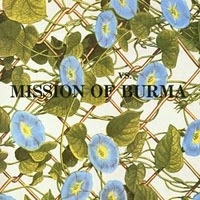 A densely visceral piece of post-punk that manages to evoke a whole spectrum of moods with limited means, I would say this is as important as early Sonic Youth and Husker Du but better than both; as challenging as any of the most difficult work of Wire or Pere Ubu, but less pretentious; as abrasive as the UK’s industrial scene, but a whole lot more fun; hypnotic, like Krautrock, but never usable for ambience; and as meat ‘n’ potatoes as the Ramones. No one quite sounds like this group, who serve up a very noisy piece of rawk that anticipates both grindcore (but slower) and shoegaze (but rougher). Empty genre-bending this ain’t, however. I’ll say it’s one of the half-dozen or so best guitar records of the 80s, especially because, without it, Daydream Nation (one of its only peers in the underground) probably wouldn’t exist. –Will
A densely visceral piece of post-punk that manages to evoke a whole spectrum of moods with limited means, I would say this is as important as early Sonic Youth and Husker Du but better than both; as challenging as any of the most difficult work of Wire or Pere Ubu, but less pretentious; as abrasive as the UK’s industrial scene, but a whole lot more fun; hypnotic, like Krautrock, but never usable for ambience; and as meat ‘n’ potatoes as the Ramones. No one quite sounds like this group, who serve up a very noisy piece of rawk that anticipates both grindcore (but slower) and shoegaze (but rougher). Empty genre-bending this ain’t, however. I’ll say it’s one of the half-dozen or so best guitar records of the 80s, especially because, without it, Daydream Nation (one of its only peers in the underground) probably wouldn’t exist. –Will
The Gits “Frenching the Bully” (1992)
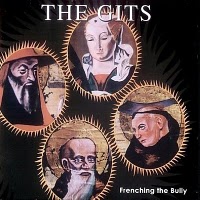 The Gits- Frenching the Bully has always been a very cold bone-chilling listen for me. One that no matter how many times I hear it I cannot think of what might have been for this band. Being veteran’s of the Seattle scene in the early 90’s these guys were some of the select few talented musicians that were poised to be huge rock stars. I really do believe that. Mia Zapata voice is like no other, she had such a passionate escape in her style of singing and a force that was undeniable. I wish Mia was still around, because I know her and the Gits would continue to give us amazing music to enjoy. At least we have this one. Frenching the Bully is a punk rock masterpiece with a furry behind it that will never die. I urge everybody to take the time to discover this band because they are truly one of a kind. –Jason
The Gits- Frenching the Bully has always been a very cold bone-chilling listen for me. One that no matter how many times I hear it I cannot think of what might have been for this band. Being veteran’s of the Seattle scene in the early 90’s these guys were some of the select few talented musicians that were poised to be huge rock stars. I really do believe that. Mia Zapata voice is like no other, she had such a passionate escape in her style of singing and a force that was undeniable. I wish Mia was still around, because I know her and the Gits would continue to give us amazing music to enjoy. At least we have this one. Frenching the Bully is a punk rock masterpiece with a furry behind it that will never die. I urge everybody to take the time to discover this band because they are truly one of a kind. –Jason
The Monks “Black Monk Time” (1966)
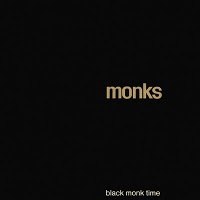 The story of the Monks is almost that of urban legend. Five U.S. G.I.s stationed in Germany in the 1960’s, decide to go AWOL from the military, begin dressing as monks and record an album of some of the most avant-garde rock n roll ever. Yes, it almost sounds too good to be true. I had heard the tale of these Monks when I picked up this wild little gem and it certainly lived up to the legend. Twelve amazingly off-kilter garage rock tunes that will surely grab your attention. The album starts of with “Monk Time” the band’s anthem and call to arms. The singer screams and squeals his montra of peace and rock n roll and invites you to become a monk and rock n roll with them. The album then kicks into gear with the raucous stomper “Shut Up” and the dancable organ-fueled “Boys Are Boys and Girls Are Choice”. The album then gets even more wild with the goofy but cathy “Higgle-Dy-Piggle-Dy” with its yodeling falseto. The album then takes a dark turn on the track “I Hate You” which is as menacing as the name implies. Just when the Monks got ya down, they bring you right back up a string of amazing garage rock rave ups. “Oh, How To Do Now” is the band’s most freakbeat dance song, with its great organ sound and catchy chorus, then the stomping sound of “Complication” slows it down a touch just before you’re treated to the wonderful “We Do Wei Du” and the amazingly sparatic “Drunken Maria” with its great call and response chorus. “Love Came Tumblin Down” is probably the Monks’ most straight forward song, with its standard singing style (no yelling, chanting or yodeling) it’s still a great song. The album then ends with “Blast Off” and “That’s My Girl”. All in all, this is a very cool, unique, bizzare and fun record. Anyone looking to hear some great 60’s garage rock that definitely isn’t from the standard mold, should seek out this obscure freaky classic. –KAM
The story of the Monks is almost that of urban legend. Five U.S. G.I.s stationed in Germany in the 1960’s, decide to go AWOL from the military, begin dressing as monks and record an album of some of the most avant-garde rock n roll ever. Yes, it almost sounds too good to be true. I had heard the tale of these Monks when I picked up this wild little gem and it certainly lived up to the legend. Twelve amazingly off-kilter garage rock tunes that will surely grab your attention. The album starts of with “Monk Time” the band’s anthem and call to arms. The singer screams and squeals his montra of peace and rock n roll and invites you to become a monk and rock n roll with them. The album then kicks into gear with the raucous stomper “Shut Up” and the dancable organ-fueled “Boys Are Boys and Girls Are Choice”. The album then gets even more wild with the goofy but cathy “Higgle-Dy-Piggle-Dy” with its yodeling falseto. The album then takes a dark turn on the track “I Hate You” which is as menacing as the name implies. Just when the Monks got ya down, they bring you right back up a string of amazing garage rock rave ups. “Oh, How To Do Now” is the band’s most freakbeat dance song, with its great organ sound and catchy chorus, then the stomping sound of “Complication” slows it down a touch just before you’re treated to the wonderful “We Do Wei Du” and the amazingly sparatic “Drunken Maria” with its great call and response chorus. “Love Came Tumblin Down” is probably the Monks’ most straight forward song, with its standard singing style (no yelling, chanting or yodeling) it’s still a great song. The album then ends with “Blast Off” and “That’s My Girl”. All in all, this is a very cool, unique, bizzare and fun record. Anyone looking to hear some great 60’s garage rock that definitely isn’t from the standard mold, should seek out this obscure freaky classic. –KAM
Swell Maps “A Trip to Marineville” (1979)
 Say, that’s a swell map! Anarchic and juvenile in the best sense of the words, this stew of garage noise plays like an instruction manual for barely competent musicians with big record collections. It’s all over the map stylistically, beginning somewhere in classic UK punk territory before launching off into psychedelia, retrograde surf rock, drone, motorik kraut, and a lot of kitchen-sink clatter that lends the whole an ambience unlike almost anything in recorded music. These guys will try anything once (and sometimes two or three times, which in a few cases renders the record a little trying, unless you’re truly committed), and their knack for the deranged arrangement is a veritable textbook for the indie rockers who followed. Making a virtue of amateurism, they’ll put a wailing voice where you’d expect the guitar feedback or synthesizer on the krautpunk “Full Moon in My Pocket,” while on “Gunboats,” they ratchet up the tension simply by throwing shit around the studio. Other highlights include the opening manifesto of “H.S. Art,” the catchy “Harmony in Your Bathroom” (which sounds like Nirvana a decade before Nirvana), and the amazing centerpiece, “Midget Submarines,” which is a lock groove lullaby of post-punk fury framed by ambient piano/more shit flying around the studio. The bonus 7″ now available as bonus cuts on the CD reissue features the awesome surfpunk raga “Loin of the Surf” and “Doctor at Cake,” which sounds like a high-school talent show take on Live-Evil era Miles Davis. Everyone who hears this unhinged record might find themselves wanting to make a record of their own. Begin by throwing shit around the house. Try a little basket weaving for good measure. –Will
Say, that’s a swell map! Anarchic and juvenile in the best sense of the words, this stew of garage noise plays like an instruction manual for barely competent musicians with big record collections. It’s all over the map stylistically, beginning somewhere in classic UK punk territory before launching off into psychedelia, retrograde surf rock, drone, motorik kraut, and a lot of kitchen-sink clatter that lends the whole an ambience unlike almost anything in recorded music. These guys will try anything once (and sometimes two or three times, which in a few cases renders the record a little trying, unless you’re truly committed), and their knack for the deranged arrangement is a veritable textbook for the indie rockers who followed. Making a virtue of amateurism, they’ll put a wailing voice where you’d expect the guitar feedback or synthesizer on the krautpunk “Full Moon in My Pocket,” while on “Gunboats,” they ratchet up the tension simply by throwing shit around the studio. Other highlights include the opening manifesto of “H.S. Art,” the catchy “Harmony in Your Bathroom” (which sounds like Nirvana a decade before Nirvana), and the amazing centerpiece, “Midget Submarines,” which is a lock groove lullaby of post-punk fury framed by ambient piano/more shit flying around the studio. The bonus 7″ now available as bonus cuts on the CD reissue features the awesome surfpunk raga “Loin of the Surf” and “Doctor at Cake,” which sounds like a high-school talent show take on Live-Evil era Miles Davis. Everyone who hears this unhinged record might find themselves wanting to make a record of their own. Begin by throwing shit around the house. Try a little basket weaving for good measure. –Will
Tubeway Army “Replicas” (1979)
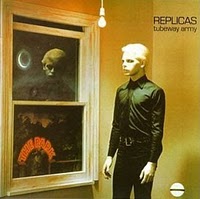 Numan’s best record is a dark and sleazy, yet oddly sensual and visionary album. The cold textures of the synthesizers are contrasted with crunchy rhythm guitar and punchy post-punk rhythms, properly making a virtue of the music’s simplicity to convey a stripped down sense of horror, alienation, and sordid pleasures. The bizarre lyrics have an imagistic quality that rounds out the mood and unifies the album beautifully. At least seven tracks here are classics: “Me! I Disconnect from You,” “Are ‘Friends’ Electric?,” “The Machman,” “Down in the Park,” “You Are in My Vision,” the title cut, and “It Must Have Been Years.” The final two tracks are moody instrumentals evocative of the diminishing humanity of the whole thing. Few hit records from the late-70s/early-80s are so unified and consistently compelling. And few synth-rock albums have such inviting textures. This is creepy post-punk that’s also as fun as a wad of bubble gum. Me! I recommend to you. –Will
Numan’s best record is a dark and sleazy, yet oddly sensual and visionary album. The cold textures of the synthesizers are contrasted with crunchy rhythm guitar and punchy post-punk rhythms, properly making a virtue of the music’s simplicity to convey a stripped down sense of horror, alienation, and sordid pleasures. The bizarre lyrics have an imagistic quality that rounds out the mood and unifies the album beautifully. At least seven tracks here are classics: “Me! I Disconnect from You,” “Are ‘Friends’ Electric?,” “The Machman,” “Down in the Park,” “You Are in My Vision,” the title cut, and “It Must Have Been Years.” The final two tracks are moody instrumentals evocative of the diminishing humanity of the whole thing. Few hit records from the late-70s/early-80s are so unified and consistently compelling. And few synth-rock albums have such inviting textures. This is creepy post-punk that’s also as fun as a wad of bubble gum. Me! I recommend to you. –Will


